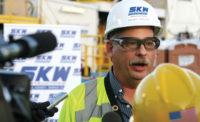
Early in 2014, the cash-strapped contractor consortium stopped constructing the third set of locks to create a third lane large enough for newer, larger ships to use the Panama Canal. The Panama Canal Authority faced a critical turning point: Negotiate terms that would help Grupo Unidos por el Canal keep going or find another way to finish the job.

|
| QUIJANO |
Jerry P. Brodsky, a partner and director in Peckar & Abramson's Latin American Practice Group, said Quijano showed "remarkable management skills in a highly volatile situation." P&A represented project surety Zurich North America. Brodsky notes the global importance of the Panama Canal's ability to serve larger ships, saying, "All those efforts have a payoff, and that payoff is scheduled to come at a particular time," he says, noting that delay could affect the economic balance beyond Panama. Ports all along the U.S. East Coast have funded expansions, with expectations of larger ships reaching them. Brodsky says Quijano's industrial engineering background shows "in his ability to understand and manage many moving parts."
Quijano explains, "The Panama Canal never lost focus on its main objective: the completion of the project within the terms of contract in order to enhance the canal's competitiveness, offer a better service and increase the value of the route for our customers. With that in mind and a clear set of rules established within the contract, all the difficult decisions during this period were aligned with that same objective." The MOU gave the contractor the cash flow to continue and deliver all 16 gates to Panama, he added. With the program now 84% complete, Quijano expects the expansion to open for commercial transits in 2016.



Post a comment to this article
Report Abusive Comment